Transforming Verizon in-store experience for business customers

Introduction
When you think of Verizon, you think phones and internet, right?
But here’s the thing, Verizon actually offers so much more: fleet management, cybersecurity, cloud storage, mobile device management, and business productivity tools. Surprising, right?
Most small business customers don’t know this. So when they walk into a store, sales reps often only mention phones and internet, missing the chance to introduce other business solutions that can help them. That means missed sales opportunities for Verizon. This lead to the problem statement of:
How might we help Verizon sales reps effectively recommend relevant solutions for small business customers, based on their unique needs and goals?
Timeline
October 2024- May 2025
Role
UX Designer and Researcher
-
Led end-to-end design process
-
Collaborated closely with stakeholders
Impact
Reduced in store time for customers to 10 mins from 52 mins
Received NPS score of 72
Boosted product awareness for sales reps and customers
Increased sales for Verizon Business by 35% (projected)
A glimpse of what we created
Project Goals
Increase Verizon’s business sales by uncovering and meeting more customer needs
Reduce customer in-store time by streamlining the discovery and solution process
Boost cross-selling opportunities by introducing relevant services
Understanding the Gaps in Current Discovery Process
To uncover challenges in how Verizon serves its business customers, we conducted interviews with store sales representatives, business representatives and account managers.
Interviews conducted:
22
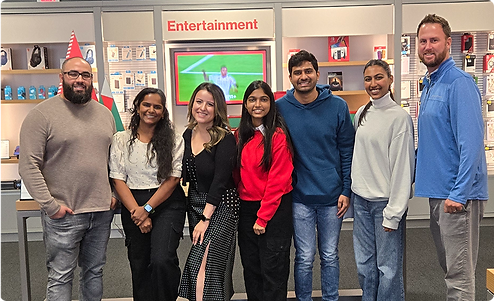
Key Insights from Interviews:
01
Retail reps often only suggest network (internet, phone) solutions.
03
On average, it takes 52 mins for a business customer to walk out of the store with a solution.
02
Business sales rep reach out to MSA(Master Solution Architect) for solutions above network.
04
Retail sales rep are not equipped to handle a business customer.
What’s stopping Reps from selling beyond phones and internet?
Why
Low Confidence & Fear of Error
Lack of Product Knowledge
Evidence
“I’m just nervous to sell anything beyond internet and phones.”
"I don’t feel confident explaining complex business solutions"
"There are too many products, and it’s hard to keep up."
"How do I know which product is the right fit for them"
This was the moment it all clicked as..
Understanding the "why" behind sales reps not suggesting other solutions was the most important part for us to know because it revealed the underlying knowledge gaps, confidence issues, and structural barriers. If we didn’t identify these blockers, any solution we design would risk being misaligned with their real-world challenges and behaviors.
Seeing the gaps firsthand
To see the gaps firsthand, we observed how business customers were handled in real time, from the first greeting to the final handoff.
Observation
sessions:
06
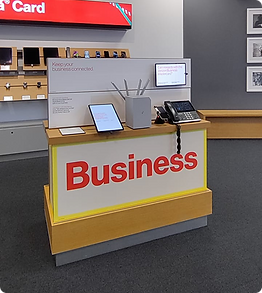

Key Insights from Observations:
01
Reps mostly sold phones and internet, rarely suggested full business solutions.
03
Many customers didn’t know Verizon offered tools like Google Workspace or fleet management.
02
For complex needs, reps submitted leads to MSAs, causing delays and drop-offs.
04
The reps used iPad with various tools such as Artemis and Salesforce for lead generation and taking notes.
Our observations confirmed the need to streamline discovery, empower frontline reps, and surface all business solutions earlier in the customer journey.
Making sense of the data
We used affinity mapping to organize insights from interviews and observations. By grouping similar quotes and behaviors, we uncovered key themes around sales rep hesitation, knowledge gaps, and missed opportunities in customer engagement.

Affinity mapping helped us make sense of a large volume of qualitative data by clustering similar insights together. It allowed us to spot recurring patterns across interviews and observations, revealing the root causes behind sales rep hesitation and gaps in the current discovery process.
Why iPad? (Choosing the right tool)


iPad VS kiosks
We were initially torn between designing our solution for a kiosk or an iPad. Both had their pros and cons, so we turned to the people who would use it most, the sales reps. Their feedback was clear and unanimous: they preferred using an iPad. With that insight, we prioritized designing an iPad-first solution to meet their needs and fit seamlessly into their workflow.
Solution
An iPad-based tool that helps sales representatives capture customer needs during in-store conversations and instantly generates personalized product recommendations tailored to each business customer’s unique needs.
Current in-store flow

business customer walks in
sales rep only suggests phones and internet. For other services, customer is referred to business rep
business rep refers customer to MSA for complex solutions
MSA helps with all the customer needs
customer ends up making a purchase
Proposed in-store flow with
iPad Solution

business customer walks in
sales rep is equipped to handle all his needs because of the iPad solution
customer makes a purchase
Design
We kicked things off by mapping out the information architecture to get a clear structure in place. Then we moved to paper sketches to quickly explore ideas and get everyone on the same page

Information architecture

Paper sketches
Next, we created low-fidelity wireframes to bring our ideas to life and start shaping the user experience. Keeping things low-fi helped us iterate quickly and gather early feedback without getting caught up in the details.




Final Prototype
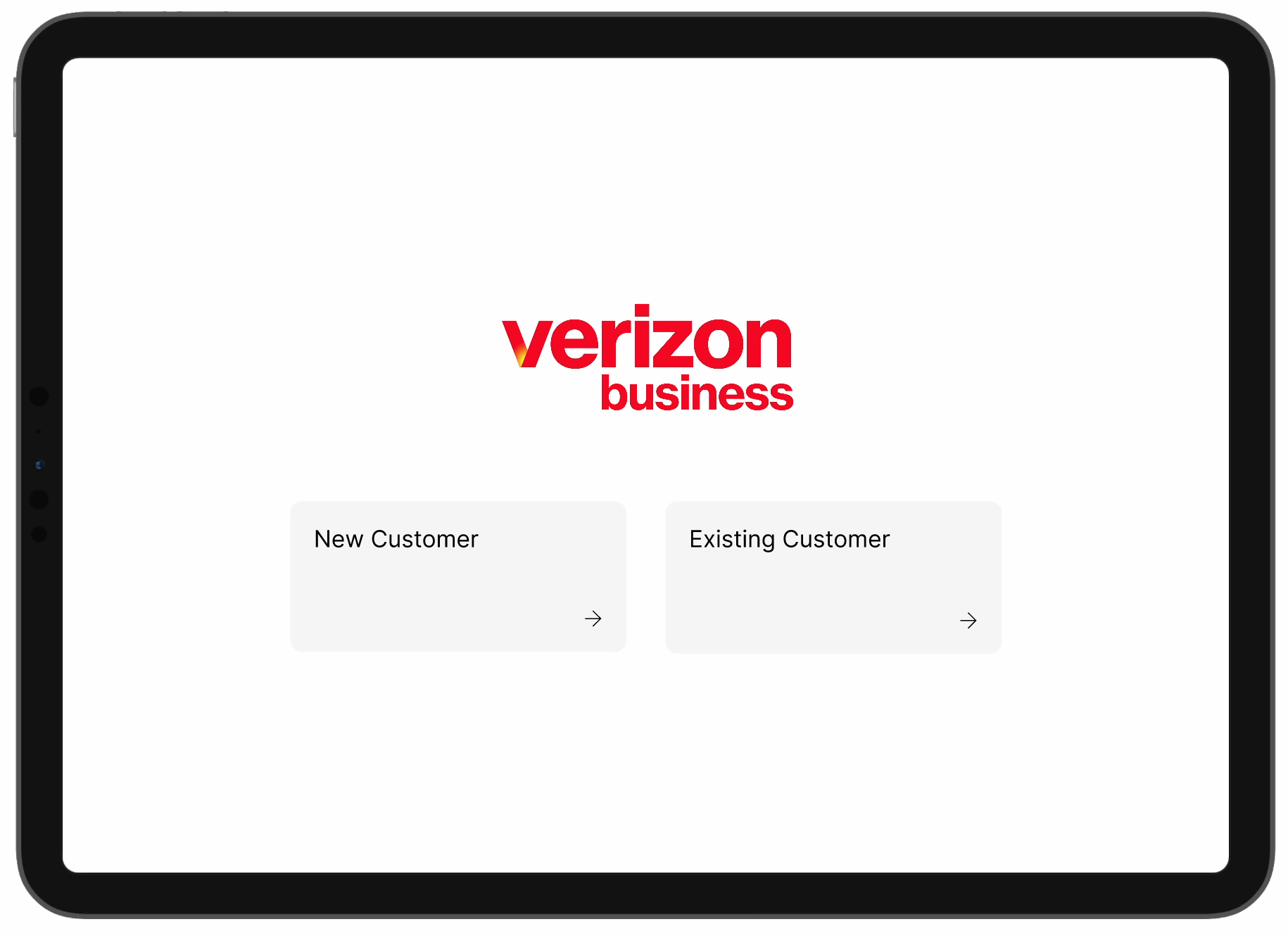
Onboarding flow:
For the onboarding flow, we designed it to pull data from existing tools and auto-populate information, saving time and reducing manual effort right from the start
Understanding
business flow:
Collecting data about the customer's business to give personalized recommendations
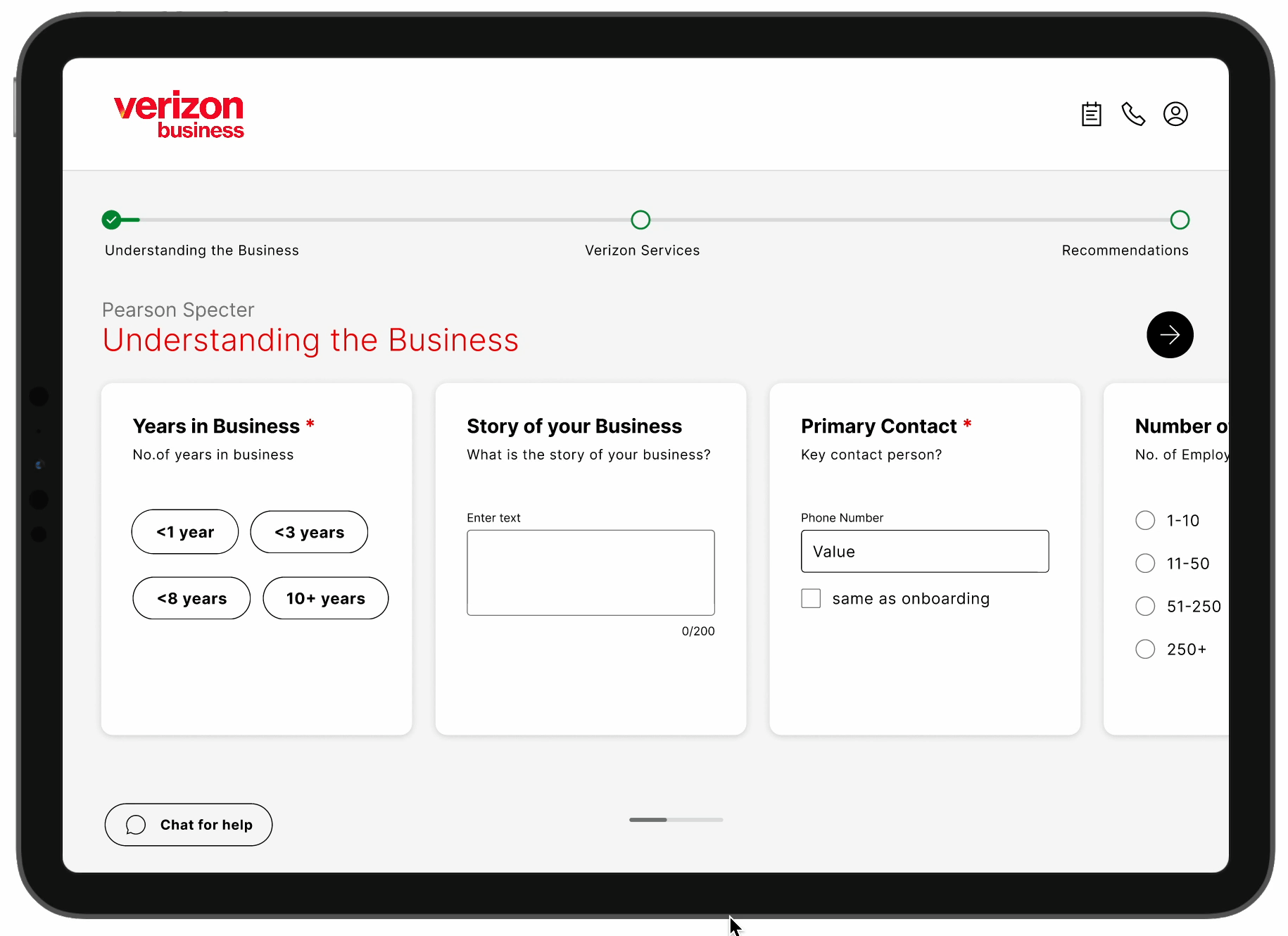
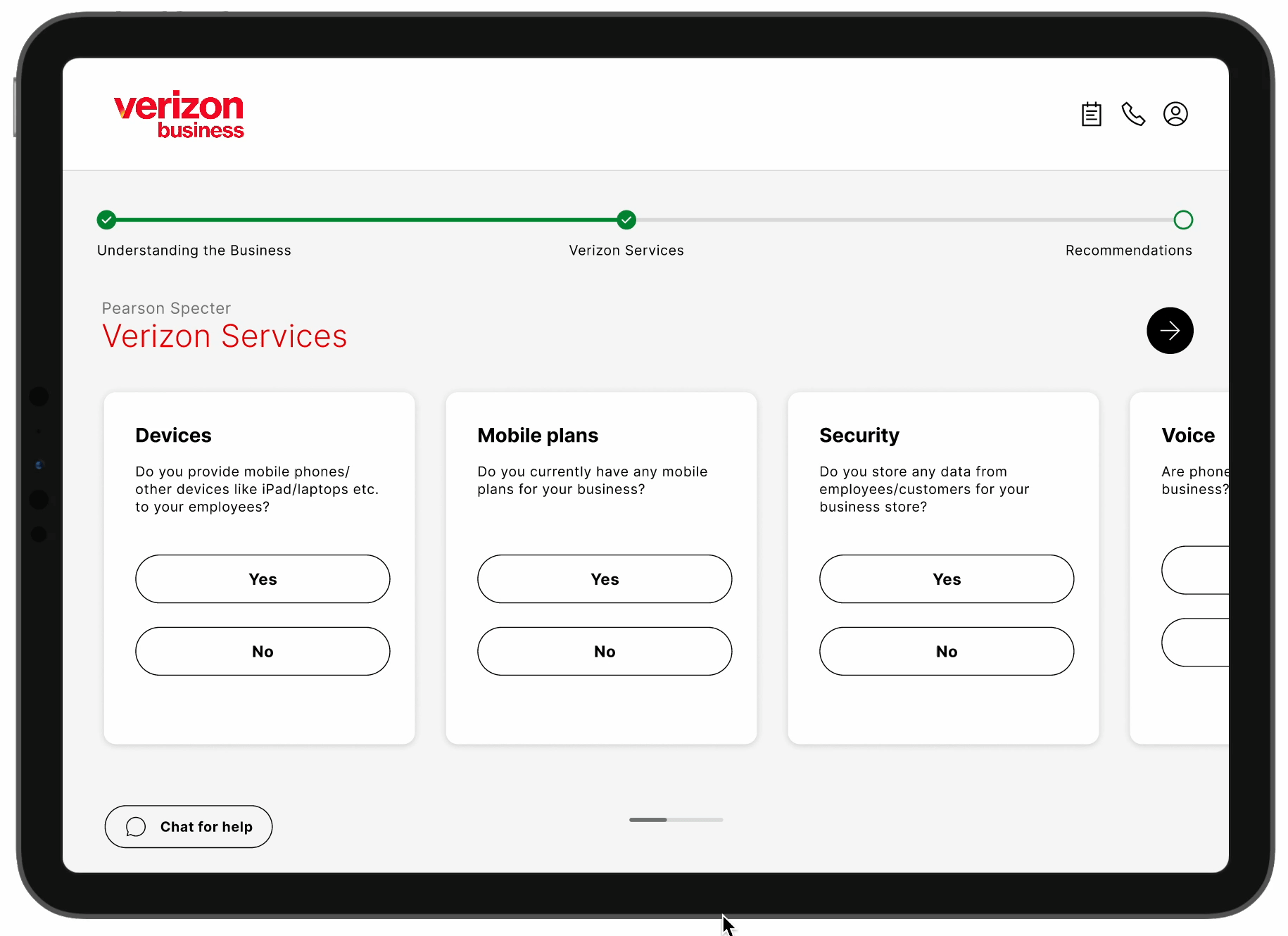
Services flow:
Collecting data on what services they currently use
Recommendations flow:
Providing personalized recommendations based on the data collected. Reps can review interests and send it to MSA directly, saving time


FAQ's
Reps can navigate to FAQs in case they need to look up info
Chat for help
Reps can ask Verizon GPT any question they need answer to
Notes
Reps can take notes here
Call
Option to call MSA or business rep if they are online
Evaluating the solution
To assess the effectiveness and usability of our solution, we conducted
Concept
testing:
02
Verizon stakeholders
Usability
testing:
11
Sales and business reps


What users liked?
Ease of use, making it accessible even for new reps
Clear product recommendations, enabling faster decision-making
Support for cross-selling, helping reps introduce services beyond internet and phones
Send to MSA option, reducing handoff delays
FAQ's section, helping reps reps quickly answer customer questions without leaving the conversation flow
What can be improved?
Service Language: Users suggested replacing generic labels with Verizon-specific terminology for better alignment
Integration of existing AI: There is an opportunity to incorporate Verizon’s in-house AI solutions for more dynamic personalization
What changes we made based on testing?
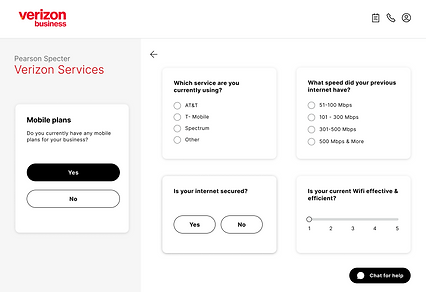
Before

After
Changed the button placement for followup questions
During testing, we noticed users had trouble finding the Next button when it was on the left side. It caused confusion and slowed them down. So, we moved it to the right, where people usually expect it, and the flow became much smoother

Before

After
Changed UX Copy
We refined the UX copy throughout the interface to better align with Verizon’s internal language and service terminology. During testing, we noticed that generic terms such as 'Internet' and 'Marketplace' created confusion or hesitation among users.
What did the users say?
Users absolutely loved our solution and was well received by all the reps we tested with. Here are some of the quotes from our usability testing sessions:
“This system is way better than what we currently have it’s more intuitive and much easier to use”
- Sales Rep
"Using this product, I can keep the conversation with customers completely natural it doesn't feel forced at all"
- Business Rep
Impact
Reduced in store time for customers to 10 mins from 52 mins
Boosted product awareness for sales reps and customers
Received NPS score of 72
Increased sales for Verizon Business by 35% (projected)
What challenges did we face?
Challenge
Avoiding a Robotic Sales Flow
One key challenge was preserving the natural conversation between the sales rep and the customer. We didn’t want the iPad interface to feel robotic or disrupt the personal connection.
Solution
Flexible flow
To keep the flow human and flexible, we designed the experience so reps could jump between suggested questions rather than follow a rigid script. Not all questions were mandatory. Usability testing confirmed that this approach maintained a natural, conversational tone during interactions.